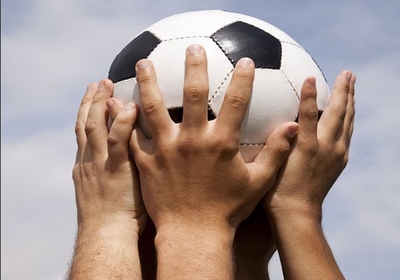 There are obviously many things that separate football and rugby as sports, though many people today who don’t know the history won’t realise how closely aligned they were during their more formative years.
There are obviously many things that separate football and rugby as sports, though many people today who don’t know the history won’t realise how closely aligned they were during their more formative years.
There is an apocryphal tale that it was during the foundation of the two sports that a student at Rugby School picked up the ball and ran with it, thus giving birth to the sport of rugby, for example. Apocryphal it may be, but it indicates the extent to which they were aligned until they became the two separate entities that they are today.
It is certainly the handling of the ball that differentiates them more than any other rule in the modern version of the games. After all, both of them allow players to run when in possession of the ball, both require teams to score more goals than the other and the pair of them see the game re-started with a throw when the ball has gone out of play at the sides of the pitch.
Yes, there are many rules that make them different sports but the moment that rugby allowed all players to handle the ball rather than just the goalkeeper was the moment that they shifted away from each other in a seismic manner.
The Early Days: When Handling the Ball was Allowed
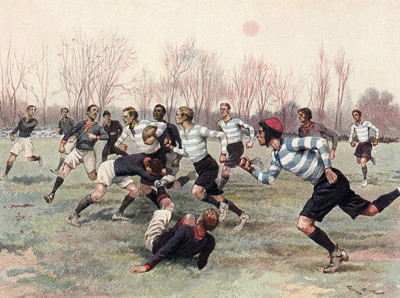
In order to understand how the handball rule has developed you firstly need to grasp the rules of the game before the split with rugby came about. Indeed, the very reason that rugby and football exist as independent sports from each is down to the fact that the various schools and organising bodies that played the game couldn’t agree on the rules that should be put in place.
The first attempt to offer some sort of codified rules came about in 1848 when the various schools around the country that played football met in Cambridge to discuss a unification of the rules of the game. One of the major points of contention came about because of the fact that some schools still employed a rule whereby all players could carry the ball with their hands.
There were seven schools around the country that offered football to their students, namely:
- Charterhouse
- Eton
- Harrow
- Rugby
- Shrewsbury
- Westminster
- Winchester
The game being played was not one that fans of either rugby or football in the modern era would recognise, though if anything they bore closely resemblance to rugby. They took their inspiration from the Middles Ages game called ‘folk football’, which essentially saw two neighbouring villages battle against each other over a ‘ball’ with few rules involved.
Most of the schools had rules whereby the players were allowed to catch the ball if it was kicked up to them, meaning that they could claim a ‘mark’ and re-start play from where they caught it. Some of them didn’t allow this, however, hence the confusion. Most of them boasted similarities, including the shape of the pitch, the use of a single ball and a goal to defend at either end of the playing area. They were similar enough to mean that the schools arranged games against each other but different enough to ensure that confusion was common.
The confusion really started to come to the fore when boys that had grown up with their version of football went to university and came across boys that had learned a conflicting version of the game. Attempts at organising matches descended into chaos, with the story of the boy from Rugby School who picked up the ball and ran with it far less likely to have given birth to a new sport and far more likely to have caused anger and derision amongst the players who didn’t play the game by those rules.
Sometimes players would agree to play one set of rules in the first-half of a match and then another set of rules for the second-half, whilst sometimes the players would discuss the rules that they both played by and develop a compromise based on discarding the rules they didn’t share and just playing with the other ones.
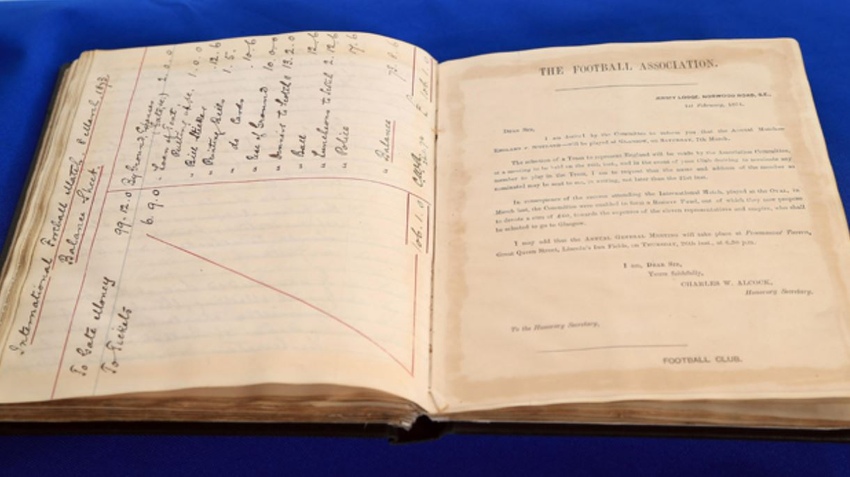
This was essentially how the Football Association was born, by choosing to play a game based on these compromised rules. In the original rules of the game a player could catch the ball and make a mark but they could not run with the ball in their hands, causing most of the schools that preferred the Rugby School version of the game to leave the meetings where the rules were being discussed.
The major split between the two schools of thought came in 1871 when the Rugby Football Union was formed. This was in direct opposition to association football, which forbade the use of hands during the match apart from by the goalkeeper and for the taking of throw-ins. Those moments are the only ones during a football game that shows the sport’s link to the early version of football that existed before the split with rugby became irreconcilable.
The Laws Develop
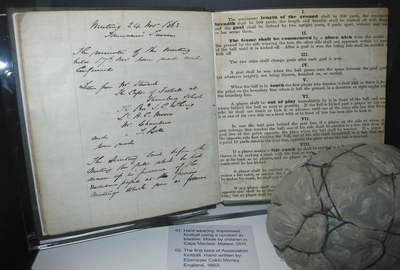
The carrying of the ball with hands was allowed until 1863, with numerous other changes to the game surrounding the handling of the ball brought in in the years that have followed. The 1863 rules stated that a player catching the ball would be given a free-kick.
The only player that was given impunity when it came to handling the ball was the goalkeeper, mainly because this was not a fixed position as it is today. The goalkeeper was allowed to handle the ball anywhere in their own half up until 1912, at which point a rule was introduced to mean that they could only handle the ball inside their own area, though they were still allowed to touch the ball inside their own half as long as it wasn’t with their hands.
Arguably the biggest change to the handball rule in the modern era as far as goalkeepers were concerned came about in 1992 when the backpass rule was introduced. This dictated that goalkeepers were not allowed to handle the ball in any way if it was passed back to them by a teammate using their feet. If they did so then an indirect free-kick would be awarded.
Major Modern Day Changes To The Handball Rule
 have been several changes to the handball rule in general play in the modern era of the game. In the Premier League in 2013, for example, the Select Group of Referees changed its stance on how the handball rule would work.
have been several changes to the handball rule in general play in the modern era of the game. In the Premier League in 2013, for example, the Select Group of Referees changed its stance on how the handball rule would work.
It was an interesting move because it wasn’t a change to the laws of the game, which can only be decided by the International Football Association Board, but rather just a change to the way that referees viewed handball offences.
The change in approach asked referees to take into account how close the player alleged to have handled the ball was to the kicker, how quickly the ball was travelling and the position of the offender’s arm – was it in a natural position when the ball struck it? The idea of intention moved to whether or not the player’s arm was in an unnatural position rather than deliberately moved towards the ball.
In 2018 it emerged the IFAB was considering re-writing the handball rule again to remove the word ‘deliberate’ from the wording. The hope was that the rule of handball would become clearer and involve less murkiness as had existed in the past. The biggest difference became for attackers, who would be punished for the ball touching their hand regardless of whether or not there was any intention. Any goal scored using the hand, even if accidental, would be disallowed from the 2019-2020 season onwards.
The Handball Rule Now
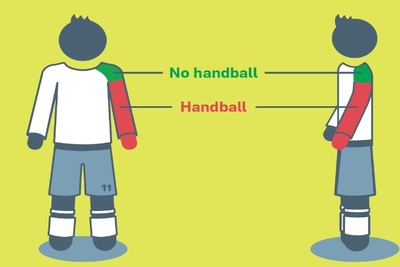 Handballs are one of the offences that result in direct free-kicks being awarded or, in the case of those committed inside the penalty areas, penalties.
Handballs are one of the offences that result in direct free-kicks being awarded or, in the case of those committed inside the penalty areas, penalties.
The goalkeeper has to follow the same rules as everyone else when they’re outside the penalty area, but they are allowed to hand the ball inside the area as long as it wasn’t passed back to them intentionally by one of their teammates using their feet.
The biggest question make for a referee when it comes to judging a handball comes down to whether or not the action was intentional.
When judging intent they have to think about the following:
- The movement of the hand and whether it goes towards the ball as opposed to the ball moving towards the hand
- Was the ball unexpected because of the proximity of the attacking player in relation to the defensive one?
- Is the hand in a natural position?
- Touching the ball with another object either held in the hand or thrown from it, such as a boot or shinpad, would class as handball
